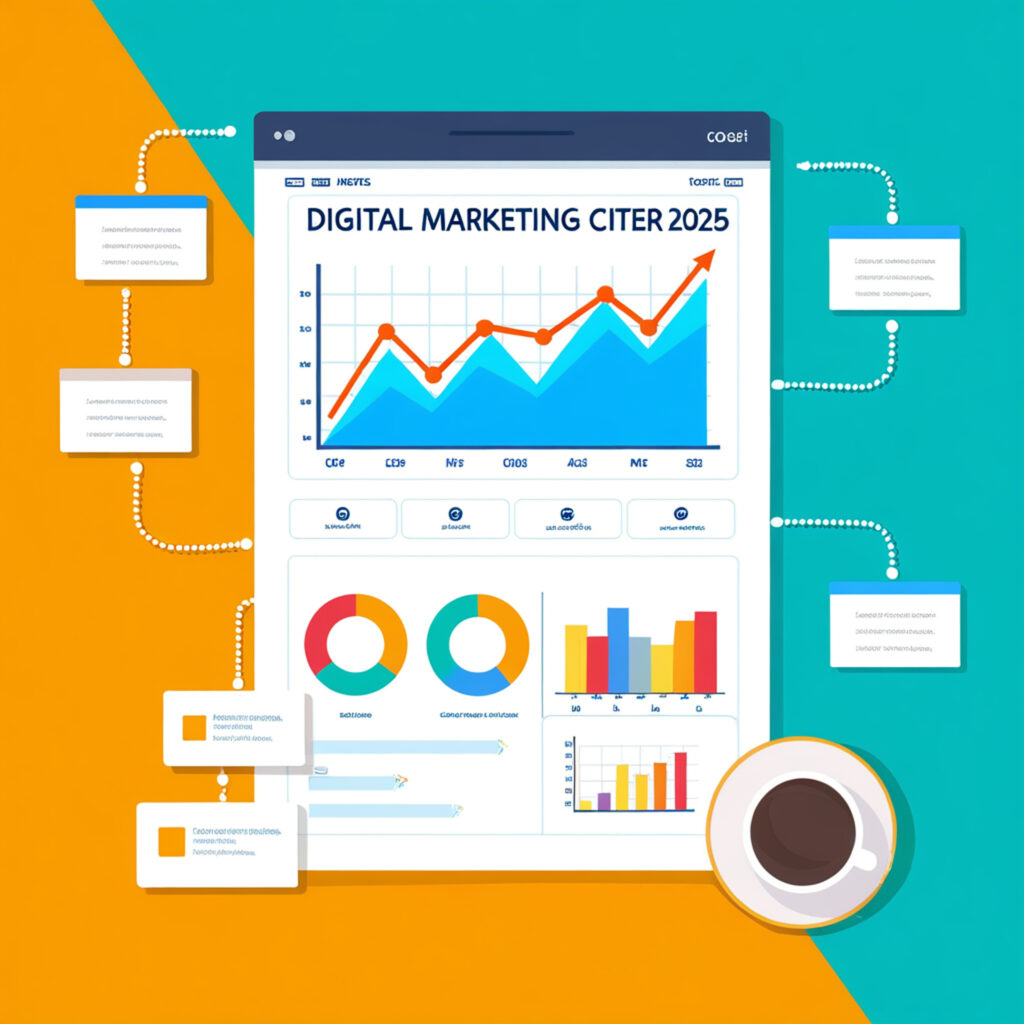Our website traffic doubled in just three months after we launched a pillar cluster content strategy. The growth was amazing but took months of hard work and planning. Our efforts paid off as we saw our Google first-page rankings climb steadily each month.
The SEO world keeps changing substantially. Research shows 20% of Google searches on mobile and Android devices now happen through voice search. Google’s algorithm prefers topic-based content over standalone articles. Topic clusters and pillar pages are now the foundations of any content strategy that works. Search engines reward this well-laid-out approach with better rankings.
We want to share our content creation journey in this piece. You’ll learn the exact steps we took to build our content cluster strategy and how to get these results yourself. Pillar pages need at least 2000 words but they’re worth the effort. Once you set them up right, they keep bringing organic traffic for years.
What is the pillar cluster content strategy?
The pillar cluster content strategy is a well-laid-out approach to arranging website content that matches how modern search engines review and rank pages. You create a coherent framework that shows topical authority instead of isolated articles targeting individual keywords.
Definition of topic clusters and pillar pages
A topic cluster includes interconnected, thematically related pages on a website. A pillar page sits at the center of each cluster as a complete resource that gives a broad overview of a particular topic. Multiple cluster pages (or subpages) surround this pillar and cover specific subtopics in greater depth. These components connect through internal linking to create a cohesive content ecosystem.
The pillar page acts as the foundation. It covers a topic really well but broadly enough so visitors can answer simple questions without diving too deep—that’s what the cluster content handles. Cluster content explores specific aspects of the main topic and targets long-tail keywords.
How the strategy works in SEO
This model shines through its internal linking structure. Each cluster page links back to the pillar page, and the pillar page connects to all related cluster content. This interconnected network achieves several critical SEO objectives:
- Distributes PageRank throughout the cluster
- Helps search engines understand topic relationships
- Signals the significance of the pillar page
- Creates a logical hierarchy of information
When done right, this strategy helps share domain authority so all posts within a cluster start ranking for their specific keywords. It also makes your site architecture more logical to both users and search engines.
Why it matters in 2025
The pillar cluster content strategy remains highly relevant in 2025 because search engines have become more sophisticated in assessing topical relevance and site structure. It also supports Experience, Expertise, Authoritativeness, and Trustworthiness (E-E-A-T)—key ranking factors that continue to grow in importance.
Topic clusters improve navigation and keep visitors involved, which increases dwell time and conversion potential. They show complete coverage of a subject, exactly what users and search engines look for in quality content.
Key benefits of using topic clusters and pillar pages

Companies that use a pillar cluster content strategy see remarkable results in several key areas. The data shows websites with topic clusters see a 10-20% improvement in search rankings. Some companies report their organic traffic jumped by 134% in just six months.
Better site structure and navigation
A pillar-cluster model creates a logical linking structure that helps search engines understand your site better. The well-laid-out hierarchy makes content easy to find for users and search crawlers alike. Strategic internal linking connects related content and gives visitors clear paths to explore your expertise. Your site becomes easier to crawl and index, which prevents keyword cannibalization when multiple pages compete for the same terms.
Higher organic traffic and keyword rankings
Pillar pages capture traffic through both broad and long-tail keywords because of their complete nature. A fitness website saw a 40% traffic increase after it reorganized 150 pages into five content clusters. Sites with strong clusters grow 23% faster than those without this structure. The strategy lets you target different search queries at once, which expands your visibility.
Improved user experience and engagement
Content clusters with clear navigation paths keep visitors on your site longer. Research shows 86% of customers will pay more when they get a better experience. Your organized framework gives visitors all the information they need in one place, eliminating the need to visit multiple websites. This approach cuts bounce rates while visitors view more pages and stay longer.
Better authority and backlink potential
Pillar pages showcase expertise through detailed topic coverage, which supports Google’s E-E-A-T ranking factors. These comprehensive resources attract more backlinks naturally as other sites reference your guides. High-quality, connected content signals to search engines that you’re a trusted source worthy of top rankings. This established authority leads to better visibility and long-term organic growth.
How to build a successful content cluster strategy
Building a pillar cluster content strategy that works starts with a methodical plan. Here’s how to put this powerful strategy into action step by step.
1. Choose a broad topic relevant to your business
Pick topics where you excel and that match your business objectives. You need to decide what main topics will define your brand. These topics are the foundations of your site structure and will shape your pillar pages. Yoast’s main topics include keyword research, SEO copywriting, and technical SEO.
2. Conduct keyword and content gap research
Good keyword research forms the core of your strategy. Your Google Search Console data will show which topics your website covers. You should look for content gaps—topics your audience wants but your site doesn’t cover. A spreadsheet helps organize existing content by topics and buyer trip stages to spot where you need new content.
3. Create a complete pillar page
Your pillar page should give an extensive overview of your core topic. Most pages need 2,500+ words to cover the subject broadly yet completely. Clear headings, a table of contents, and logical subtopic organization will make your content easy to read.
4. Develop supporting cluster content
Each cluster page focuses on one aspect of your pillar topic to answer specific questions and target long-tail keywords. Supporting articles take a closer look at subtopics, offering details you left out of the pillar page. Content briefs help guide your writing and maintain quality across cluster pages.
5. Implement internal linking structure
A solid linking strategy helps search engines understand content relationships and hierarchy. Supporting pages should link up to the pillar page and connect in sequence. Your cluster pages need links back to the pillar page with descriptive anchor text to create a network that spreads PageRank effectively.
6. Optimize for on-page SEO
Target keywords belong in specific spots—title tags, meta descriptions, URLs, headers, and your first 100 words. Content structure works best for search engines and LLMs when you use semantic chunking, lead with answers, and add schema markup. Note that keywords matter, but how you structure content equally affects your modern search rankings.
Common mistakes and how to avoid them

The best pillar cluster content strategy can fail if you don’t avoid these common pitfalls. Let’s get into the most frequent mistakes and their solutions.
Overlapping or duplicate content
Multiple pages competing for the same search terms create keyword cannibalization that weakens your rankings. This happens when you publish similar content without proper planning. You can fix this by analyzing your pages’ positions for target keywords. Then delete redundant content, redirect to your strongest page, or merge overlapping articles into complete resources.
Poor internal linking practices
Internal links are the foundations of your cluster strategy. Supporting pieces must link to their pillar page with descriptive anchor text—never vague terms like “click here”. Create an internal linking checklist to make sure all cluster content links to the pillar. This ensures consistent anchor text usage and removes outdated links. Watch out for orphaned pages that search engines can’t find because they have no incoming links.
Choosing topics that are too narrow or too broad
Make sure your topic can support 8-22 niche blog posts before creating pillars. You’ll find it hard to create enough cluster content otherwise. Topics that are too broad often lead to off-brand content. A good pillar addresses your customer’s core problems with the right search volume.
Neglecting content updates and audits
Content clusters need constant evolution. Your pillar pages need updates at least yearly, or every three months for topics that change faster. Regular content audits help you find gaps, outdated information, and content that competes with itself.
Conclusion
Pillar cluster content strategy works as one of the best ways to boost SEO performance in 2025. Our experience shows this method delivers substantial results with proper execution. We doubled our traffic in just three months after implementing topic clusters. This proves that strategic content arrangement pays off big time.
The path to successful implementation has several key elements. You need to select relevant broad topics, create complete pillar pages, develop supporting cluster content, and establish proper internal linking. Each step builds on the previous one to create a powerful content ecosystem.
Note that this strategy takes time to show results. Your patience will end up rewarding you with higher rankings, increased organic traffic, better user experience, and stronger topical authority. Search engines now reward websites that show complete subject matter expertise instead of disconnected content pieces.
Many websites still struggle with common pitfalls like content cannibalization, poor linking practices, or unsuitable topic selection. You should start small with one well-defined topic cluster before expanding to other areas.
This approach goes beyond being just an SEO tactic. It matches how users and search engines prefer to interact with content naturally. Users love organized information pathways. Search algorithms reward sites that show clear topical expertise. The pillar cluster model meets both these needs and is a great way to get results for any business focused on growing their organic presence over the last several years.
![The Proven Pillar Cluster Content Strategy That Doubled Our SEO Traffic [2025 Guide]](https://webwej.com/wp-content/uploads/2025/10/The-Proven-Pillar-Cluster-Content-Strategy-That-Doubled-Our-SEO-Traffic-2025-Guide-930x620.webp)